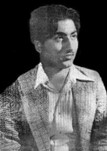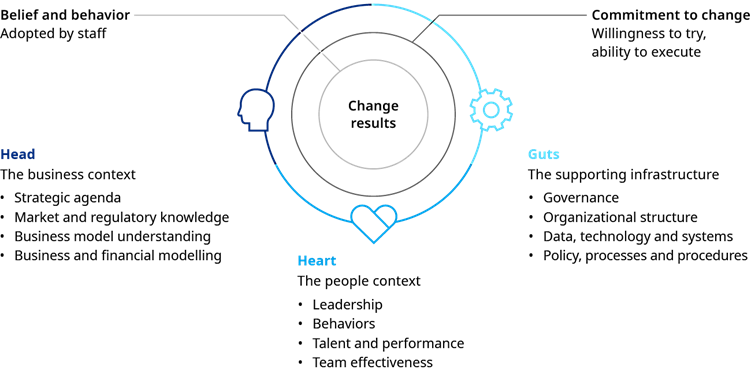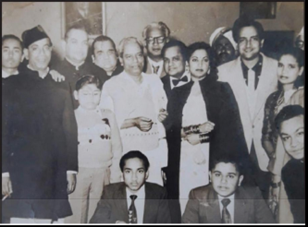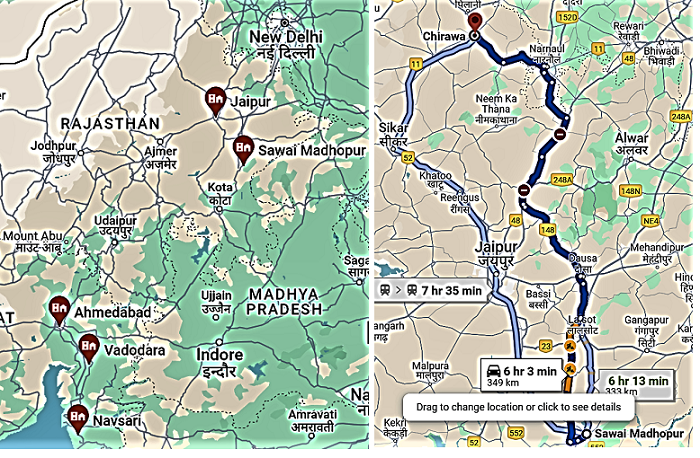 That the potential of Mohammad Rafi’s voice was first noticed by none other than the most noticed, and popular, voice of Hindi cinema, K L Saigal, is now a folklore tale that does not any more repetition. Similarly, when we pick up Mohammad Rafi’s songs of ‘40s, it, too, is now not necessary to remind that it was Shyam Sundar who gave the first ever break to Mohammad Rafi in 1942 in a Punjabi film, Gul Baloch. Nor too is any more necessary to remind that his maiden song in a Hindi film – a chorus for Pehle Aap (1944) – recorded by Naushad was to be the seed that was to grow as great Banyan Tree of the future bond of Naushad – Mohammad Rafi.
That the potential of Mohammad Rafi’s voice was first noticed by none other than the most noticed, and popular, voice of Hindi cinema, K L Saigal, is now a folklore tale that does not any more repetition. Similarly, when we pick up Mohammad Rafi’s songs of ‘40s, it, too, is now not necessary to remind that it was Shyam Sundar who gave the first ever break to Mohammad Rafi in 1942 in a Punjabi film, Gul Baloch. Nor too is any more necessary to remind that his maiden song in a Hindi film – a chorus for Pehle Aap (1944) – recorded by Naushad was to be the seed that was to grow as great Banyan Tree of the future bond of Naushad – Mohammad Rafi.
Mohammad Rafi did sing for around 45-46 music directors during 1944 to 1950. However, when we scroll names of these music directors, we come across names of vintage era music directors like Hafeez Khan, Firoz Nizami, Pt. Govindram, Alla Rakha Queraishi, Bulo C Rani, Hanuman Prasad, Rashid Atre, Datta Devjekar, Khemchand Prakash, Shyam Sunder, Sajjad Hussain and the like more. In a way, that shows early acceptance of playback singing capabilities of Mohammad Rafi. Mohammad Rafi also seems to have developed good rapport with music directors like Hans Raj Behl and Husnlal Bhagatram who went on to contribute notably till well into mid-50s. Another music director, who himself was struggling to make his mark, C Ramchandra, seemed to have found Mohammad Rafi’s voice to suit his style of music compositions. The new stars like S D Burman, Shankar Jaikishan, Madan Mohan, who were to create the compositions styles that was to shape the Hindi film music of the Golden Era, seemed to have test-cased Mohammad rafi with a song or two. It was Mukesh who seemed to be their first-choice male playback singer, with Mohammad Rafi not being seen anywhere near being the automatic choice for the playback of lead actors.
Till 1950, Mohammad Rafi had just a few what can said to be universally popular songs, like YahaN Badla Wafa a Bewafai Ke Siva Kya Hai (Jugnu, 1947, with Noor Jehan – Music: Firoz Nizami), Ek Dil Ke Tukade Hazar Hue (Pyar Ki Jeet, 1948 – Music: Husnlal Bhagatram) and Suhani Raat Dhal Chuki Na Jaane Tum Kab Aaogi (Dulari, 1949 – Music: Naushad). Of course, two of the Hindi Cinema’s all-time great patriotic songs, Suno Suno Aye Duniyawalo Bapu Ki Ye Amar Kahani (NFS – Music: Husnlal Bhagatram) and Watan Ki Raah Mein Watan Ke NaujawaN Shaheed Ho (Shaheed, 1948 – Music: Ghulam Haider) do belong to this period.
There would be no doubt that recalling Mohammad Rafi’s happy, romantic, solo songs, for the years 1944 – 1950 should be a very unique experience.
Pyar Karana Padega Ek Din … Tum Ko Hansana Padega Ek Din – Sharabati Aankhein (1945) – Lyrics: Pt. Indra – Music: Firoz Nizami
The songs wherein one party takes offence and other tries to please has remained a very popular genre in Hindi films. It seems that when the song compositions were still under the shadow of traditional theatre-style music, Mohammad Rafi had already started carrving out his own style for this genre of songs.
Rahe To Kaise Rahe Dil Pe Ikhtyaar Mujhe …. Tum Is Nazar Se Na Dekho Baar Mujhe – Room No. 9 (1946) – Lyrics: Naqshab Zarachvi – Music: Rasheed Atre
The very big name of those years, Shyam, is singing the song on the screen. However, a relatively novice playback singer that Mohammad Rafi was does not seem to overawes by the occasion and seems to be laying the foundation of developing his unique modulation style to mime the acting style of actor enacting the song on the screen.
Ab Wo Hamaare Ho Gaye… Ikraar Karein Ya Na Kareien…. Humko Unhi Se Pyar Hai Wo Pyar Karein Ya Na Karein – Safar (1946) – Lyrics: Gopal Singh (G S) Nepali – Music: C Ramachandra
C Ramchandra belongs to that early class of music directors who arrived on the Hindi film music scene during the vintage era, but has different ideas about the way the would compose the music. His experimental streak did not whither away even after having undergone quite rough weather in the initial years of struggle,
As early as 1947, C Ramchandra seems all at ease creating western styled Aana Meri Jaan Meri Jaan Sunday Ke Sunday and Maari Katari Mar Jaana (Shehnai, 1947). Even in 1950, on one hand he could compose a light, foot-tapping western styled Gore Gore O Banke Chhore (Samadhi, 1950) while simultaneously composing a deeply emotional pathos melody, Mahefil Mein Jal Uthi Shama Parwane Ke Liye ( Nirala, 1950).
Even though C Ramachandra had started tasting success in films like Nadiya Ke Paar (1948, Dilip Kumar, Kamini Kaushal), Patanga, Saanwariya (1949), he can be said to have gained escape velocity only during his association with Master Bhagwan.
So, while C Ramachandra was trying to create a separate trail by experimenting with Mid-eastern, Arabic, Indian folk and Western styled compositions, Mohammad Rafi was also working on developing his own unique style. Songs like Humko Tumhara Hi Aasara (Saajan, 1947 – Lyrics: Moti), O Baabu Aji Baabu Gali Mein Teri Chand Chamka (Saajan, 1947 – Lyrics: Qamar Jalalabadi) or Kis Waade Ka Matlab Kya Karein (Duniya, 1949 – Lyrics: Arzoo Lakhanvi) easily validate this proposition.
Prem Ki Naiyya Dol Rahi Hai Bojh Hriday Ka Taul Rahi Hai – Utho Jago 1947 – Lyrics:? – Music: Azeez Khan
The lyrics of the song seem to deliver the message of changing winds to the traditional mind-set society, in satirical style.
prem mein aisi surat bigadi
sar par jute, paav mein pagdi
izzat ke pat khol rahi hai
aise dhanwalo ke laal
ud gaye jinke sar ke baal
sar ki taat bhi bol rahi hai
prem na aaya tumko raas
kahe ye tumse gappu daas
kya, niyat dawa dol rahi hai
Ham Apne Dil Ka Fasana Unhein Soona Na Sake, Lagi Hai Jo Aag Dil MeinWo Buza Na Sake – Acress (1948) – Lyrics: Naqshab Zarachvi – Music: Shyam Sundar
After a good four years, Shyam Sundar is able to call upon Mohammad Rafi for his compositions. Of course, he now has used Rafi as lead male playback singer,
We can see Rafi so deftly handling one and half octave singing in one line and easily sliding across high-low octaves in the song. Most of the actors found it so hard to match this singing style on the screen.
Nigahein Milane Ko Jee Chahta Hai – Pyar Ki Aag (1948) – Lyrics: Qamar Jalalabadi – Music: Ghulam Mohammad
The dice of Hind film music so mysteriously choosing to reject a song and place the other (from Dil Hi To Hai, 1963 – Asha Bhosle – Lyrics: Sahir Ludhianvi – Music: Roshan) on peak of popularity even when the lyrics of the initial lines are (almost) same.
Asides:
In the very next year, a twin song composition also was created in Karwat (1949 – Lyrics: Saifuddin Saif – Music: Hans Raj Behl) in the voices of Paro Devi and K L Saigal styled Satish Batra, to meet the fate of resounding failure.
Dil Lena Hai to Le Lo, Inkar Nahi Hai, KyuN Garm Sard Hote Ho Taqrar Nahi Hai – Chakori (1949) – Lyrics: Mukraj Bhakri – Music: Hans Raj Behl
Hans Raj Behl and Mohammad Rafi first teamed up in a successful failure-of-love solo Sab Kuchh Lutya Hamne Aa Kar Teri Gali Mein (Chunariya, 1948) to build up a very fruitful association.
As it happens, this film also marks another very successful combination of Mohammad Rafi and Bharat Bhushan.
Mehman Ban Ke Aaye The Armaan Ban Gaye – Shohrat (1949) – Lyrics: Khanwar Zamma – Music: Azeez Hindi
The variety and versatility of Mohammad Rafi’s voice can best be appreciated if the duet twin version, with Hamida Banu, of the song is also heard together.
Dil Jawani Ke Nashe Mein Choor Hai Kaun Kaheta Hai Ke Dilli Door Hai – Birha Ki Raat (1950 – Lyrics: Sarshar Shailani – Music: Husnlal Bhagatram
The association of Husnlal Bhagatram with Mohammad Rafi also was quite varied and fruitful, beginning with some best ever sad songs like, Ek Dil Ke Tukde Hazar Hue (Pyar Ki Jeet, 1948), Muhabbat Ke Dhokhe Mein Koi Na Aaye (Badi Behen, 1949).
Mohammad Rafi presents his innovatively embedded harkats style of singing the light mood song.
Akele Mein Wo Gabarate To Honge – Biwi (1950) – Lyrics: Wali Sahab – Music: Sharmaji (a.k.a. Khayyam)
Mohammad Rafi presents the lost-in-deep-thoughts-of-the-loved-one mood.
Asides:
Amin Sayani is reminding Mahendra Kapoor in some programme how the college functions of his time would not conclude till Mahendra Kapoor sings this song. Mahendra Kapoor, too, very fondly sings the opening lines, in his own way.
Recalling Mohammad Rafi;s sad romantic songs should also be such a rich experience. But that it is for some other time…..






 Cawas Lord (1911 – 2007) was born to a very strict and traditional Parsi family from Pune. Young Cawas was so much interested in music that at the age of 12 he migrated to Mumbai. Here, his musical career at Bombay commenced by playing military drums and bagpipes under various military bandleaders. By ’30s Cawas Lord had started playing percussion instruments for earliest talky films. He is said to have arranged background score for India’s fist talky film Alamara (1931).
Cawas Lord (1911 – 2007) was born to a very strict and traditional Parsi family from Pune. Young Cawas was so much interested in music that at the age of 12 he migrated to Mumbai. Here, his musical career at Bombay commenced by playing military drums and bagpipes under various military bandleaders. By ’30s Cawas Lord had started playing percussion instruments for earliest talky films. He is said to have arranged background score for India’s fist talky film Alamara (1931). Kersi Lord (B: 14 February 1935 – D: 16 October, 2016) was the eldest of three children of Cawas and Banubai Lord. Banubai and her brothers were also trained musicians. His younger sister Hilla was a talented pianist, but she never took it up at the professional level. The younger brother, Burjorji, was an ace percussionist.
Kersi Lord (B: 14 February 1935 – D: 16 October, 2016) was the eldest of three children of Cawas and Banubai Lord. Banubai and her brothers were also trained musicians. His younger sister Hilla was a talented pianist, but she never took it up at the professional level. The younger brother, Burjorji, was an ace percussionist. Burjor Lord was also proficient in playing several percussion instruments. However, he felt that he should focus on one instrument and carve out his own space. That instrument was drum set.
Burjor Lord was also proficient in playing several percussion instruments. However, he felt that he should focus on one instrument and carve out his own space. That instrument was drum set. We also pay our respects to
We also pay our respects to 
 contains 20 sets of same name artists. The
contains 20 sets of same name artists. The 
 Talat Mahmood (24 February 1924 – 9 May 1998) as a singer had a magical spell over the listeners in the 50s. The career of this velvet-voiced singer ran parallel to his other cotemporary singers like Mohammad Rafi, Mukesh, Monna Dey and Kishore Kumar. Talat Mahmood sang 747 songs in 12 Indian languages and starred in 13 films.
Talat Mahmood (24 February 1924 – 9 May 1998) as a singer had a magical spell over the listeners in the 50s. The career of this velvet-voiced singer ran parallel to his other cotemporary singers like Mohammad Rafi, Mukesh, Monna Dey and Kishore Kumar. Talat Mahmood sang 747 songs in 12 Indian languages and starred in 13 films. Talat Mahmood and Asha Bhosle, apparently look like singers of different styles. Their career graphs also ran high in different slots of the time. However, as we had seen in the last episode in this series, their voices forge a very distinctive synthesis in the duets.
Talat Mahmood and Asha Bhosle, apparently look like singers of different styles. Their career graphs also ran high in different slots of the time. However, as we had seen in the last episode in this series, their voices forge a very distinctive synthesis in the duets. It was almost after 1943 that the new crop of music directors started using western musical instruments in the orchestration of the Hindi film songs. C Ramchandra, because of his association with trumpet player Chic Chocolate and jazz drummer Kawas Lord, went in almost overdrive by ecen experimenting with using western tunes in the songs. Music directors like Anil Biswas, Naushad, S D Burman etc. further expanded the range by combining Indian classical and folk music with the western music and the western musical instruments like violin, chello, guitar etc. It was this trend in orchestration of Hindi film music that led the search for the instrumentalists to hotels, clubs and functions of the communities at the big cities like Bombay, Calcutta, where the strong culture of bands consisting of Goanese and Parsi instrumentalists had had developed very well. It was at one of such bands that Chocolate and Lords met Goody Seervai and were immediately impressed with Seervai’s style of playing the accordion. They immediately introduced Seervai to C Ramchandra and Naushad.
It was almost after 1943 that the new crop of music directors started using western musical instruments in the orchestration of the Hindi film songs. C Ramchandra, because of his association with trumpet player Chic Chocolate and jazz drummer Kawas Lord, went in almost overdrive by ecen experimenting with using western tunes in the songs. Music directors like Anil Biswas, Naushad, S D Burman etc. further expanded the range by combining Indian classical and folk music with the western music and the western musical instruments like violin, chello, guitar etc. It was this trend in orchestration of Hindi film music that led the search for the instrumentalists to hotels, clubs and functions of the communities at the big cities like Bombay, Calcutta, where the strong culture of bands consisting of Goanese and Parsi instrumentalists had had developed very well. It was at one of such bands that Chocolate and Lords met Goody Seervai and were immediately impressed with Seervai’s style of playing the accordion. They immediately introduced Seervai to C Ramchandra and Naushad.